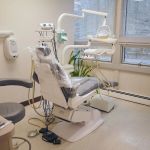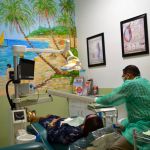How to Prevent and Treat Oral Cancer: A Comprehensive Guide
- 1. Understanding Oral Cancer
- 2. Risk Factors for Oral Cancer
- 3. Symptoms of Oral Cancer
- 4. Prevention and Treatment Methods
- 5. Real-Life Case Studies
- 6. How to Get Started and Take Action
1. Understanding Oral Cancer
Oral cancer refers to the development of cancerous cells in the mouth or throat, including the lips, gums, tongue, and the roof or floor of the mouth. While it can occur at any age, the risk increases with age and tobacco use. It is essential to understand that oral cancer is a serious condition, but early detection and proper treatment can significantly improve survival rates.
2. Risk Factors for Oral Cancer
Several factors contribute to the risk of developing oral cancer. These include:
- Tobacco Use: Smoking and chewing tobacco increase the risk of oral cancer.
- Excessive Alcohol Consumption: Drinking alcohol regularly is another significant risk factor.
- HPV Infection: Human papillomavirus (HPV), particularly HPV-16, is linked to an increased risk of oral cancer.
- Sun Exposure: Frequent exposure to sunlight without protection can increase the risk of lip cancer.
- Age and Gender: People over 40, especially men, are at higher risk.
3. Symptoms of Oral Cancer
Oral cancer symptoms may vary, but common signs include:
- Unexplained sores or ulcers that do not heal.
- Painful chewing or swallowing.
- Persistent throat pain or feeling of something being stuck in the throat.
- Red or white patches in the mouth or on the lips.
- Changes in voice or hoarseness.
If you experience any of these symptoms, it is crucial to seek medical attention promptly for a proper diagnosis and treatment plan.
4. Prevention and Treatment Methods
Preventing oral cancer involves a combination of lifestyle changes and medical interventions. Here are some effective strategies:
- Quit Smoking and Avoid Tobacco Products: The most significant way to reduce your risk of oral cancer is to quit smoking or chewing tobacco.
- Limit Alcohol Consumption: Reducing alcohol intake can lower the risk of oral cancer.
- Get Regular Screenings: Regular dental check-ups can help detect early signs of oral cancer before they become severe.
- Healthy Diet and Hydration: Eating a well-balanced diet and drinking plenty of water can strengthen your immune system and support oral health.
- HPV Vaccination: Vaccination against HPV can significantly reduce the risk of developing HPV-related oral cancers.
When it comes to treatment, options include surgery, radiation therapy, chemotherapy, or a combination of these. The type of treatment depends on the cancer's stage, location, and the patient’s overall health.
5. Real-Life Case Studies
Many people have successfully fought oral cancer after early detection and proper treatment. Take the case of John, a 55-year-old man who regularly visited his dentist. During a routine check-up, his dentist noticed a small lesion in his mouth. After a biopsy, it was determined to be early-stage oral cancer. Thanks to timely treatment, including surgery and radiation, John is now cancer-free and regularly participates in awareness campaigns about oral health.
Another inspiring story is that of Mary, who had never smoked but developed oral cancer due to the HPV virus. After undergoing treatment and being vaccinated against HPV, she now advocates for vaccination and awareness about the connection between HPV and oral cancer.
6. How to Get Started and Take Action
If you want to protect yourself from oral cancer, start by making simple lifestyle changes such as quitting smoking, reducing alcohol consumption, and maintaining a healthy diet. Additionally, it’s vital to schedule regular dental check-ups and screenings to ensure your oral health is always monitored. Prevention is the key, and early detection is crucial in improving the chances of successful treatment.
Take action today to protect your health and consult with a medical professional about how you can begin your journey towards preventing oral cancer. Explore more about products and resources available for oral cancer prevention. Stay proactive, and always stay informed.







 Groton Dental Group4.0 (288 review)
Groton Dental Group4.0 (288 review) Dental Care of South Elgin4.0 (766 review)
Dental Care of South Elgin4.0 (766 review) Prosthodontics of Ho-Ho-Kus: Michael W. Klotz, DMD, MDentSc, FACP4.0 (27 review)
Prosthodontics of Ho-Ho-Kus: Michael W. Klotz, DMD, MDentSc, FACP4.0 (27 review) Central Avenue Dental Arts: Dr. Ira A. Levine, DDS, MAGD5.0 (41 review)
Central Avenue Dental Arts: Dr. Ira A. Levine, DDS, MAGD5.0 (41 review) Tropic Dental Care | Cosmetic & Emergency Dentist Riverside4.0 (74 review)
Tropic Dental Care | Cosmetic & Emergency Dentist Riverside4.0 (74 review) Legacy Dental Care Los Altos0.0 (0 review)
Legacy Dental Care Los Altos0.0 (0 review) The Importance of Oral Health Education During Pregnancy for a Healthy Pregnancy
The Importance of Oral Health Education During Pregnancy for a Healthy Pregnancy Best Tips for Brushing Your Teeth Properly for Healthy Gums: Essential Techniques for Oral Health
Best Tips for Brushing Your Teeth Properly for Healthy Gums: Essential Techniques for Oral Health Why Skipping Dental Checkups Can Lead to Bigger Oral Health Problems
Why Skipping Dental Checkups Can Lead to Bigger Oral Health Problems Advantages of Porcelain Dental Restorations
Advantages of Porcelain Dental Restorations How Can Diabetes Cause Tooth and Gum Problems? Preventing and Managing Oral Health Issues
How Can Diabetes Cause Tooth and Gum Problems? Preventing and Managing Oral Health Issues Healthy Habits for Promoting Good Oral Health and Hygiene: Tips for a Healthy Smile
Healthy Habits for Promoting Good Oral Health and Hygiene: Tips for a Healthy Smile